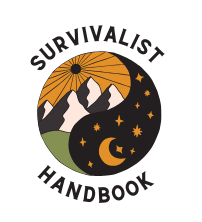In a world where unexpected situations can arise, mastering basic survival skills offers peace of mind and the potential to save lives. Whether you’re an avid adventurer or simply want to feel prepared for life’s unpredictable turns, knowing how to survive a plane crash in the wilderness is invaluable information. This article provides essential tips and techniques for navigating such a harrowing scenario, equipping you with the knowledge needed to overcome the odds and emerge stronger. From building shelters to finding water and food, from staying warm to signaling for help, these key survival skills empower you to become self-reliant and resilient. So, let’s dive into this essential knowledge and prepare yourself for the unexpected challenges that may lie ahead.
How to Survive a Plane Crash in the Wilderness
In a world where unexpected situations can arise, mastering basic Survival Skills offers peace of mind and the potential to save lives. This article will provide you with comprehensive information on how to survive a plane crash in the wilderness. From assessing the situation to seeking rescue and preparing for future incidents, we will cover each step to ensure your safety and increase your chances of survival.

Assessing the Situation
Before taking any action, it is crucial to assess the severity of the crash, evaluate your physical condition, and identify immediate dangers. Firstly, determine the severity of the crash by observing the damage to the aircraft and the surrounding area. This will give you an idea of the challenges you may face.
Next, assess your physical condition. Check yourself for any injuries or pain and take note of any immediate medical needs. If you or anyone else on board requires immediate medical attention, it should be addressed as a priority.
Lastly, evaluate the immediate dangers around you. Look for any hazards such as fire, leaking fuel, or unstable debris that could pose a threat to your safety. By understanding the severity of the crash, assessing your physical condition, and evaluating immediate dangers, you can make informed decisions for your survival.
Securing Your Safety
Once you have assessed the situation, it is essential to secure your safety. Here are the steps you should take:
- Leave the crash site if necessary: If staying at the crash site puts you in immediate danger, such as an approaching fire, it is important to move away from the wreckage.
- Stay close to the wreckage for resources: The wreckage can provide valuable resources such as shelter materials, tools, and survival equipment. Stay near the crash site while ensuring your safety.
- Check for injuries among fellow survivors: If there are other survivors, check for injuries and determine their condition. Provide immediate assistance if needed.
- Ensure personal safety before helping others: While it is natural to want to help others, ensure your own safety and well-being first. You will be in a better position to assist others if you are in good physical condition.
By securing your safety, you set a strong foundation for survival and can prepare for the challenges ahead.
Finding Shelter
Finding shelter is crucial for protecting yourself from the elements and maintaining body temperature. Follow these steps to find or create an appropriate shelter:
- Search for natural or man-made shelters: Look for caves, overhangs, or fallen trees that can provide natural shelter. If such structures are not available, consider building a makeshift shelter using available materials.
- Assess and modify available wreckage: The aircraft wreckage can serve as a potential shelter. Inspect it for structural stability and modify it to create a safe and protected space.
- Build a shelter using surrounding materials: If natural or man-made structures are not available, use branches, leaves, and other debris to construct a shelter. Ensure it is well-insulated and provides protection from wind, rain, and cold temperatures.
Remember to prioritize finding or creating a shelter as it will greatly increase your chances of survival and provide a sense of security in the wilderness.
Locating Water Sources
Water is essential for survival, and finding a clean water source should be a top priority. Use the following steps to locate and obtain water:
- Prioritize finding a water source: Look for nearby rivers, streams, lakes, or any other water bodies. These natural water sources are usually safe for consumption.
- Look for nearby rivers, streams, or lakes: Once you have identified potential water sources, approach them cautiously. Check for signs of pollution or contamination before consuming the water.
- Collect and purify water for safe consumption: Use a container or a fabric to collect water from the source. If the water appears contaminated, purify it by boiling it or using purification tablets or filters.
Having access to clean water is vital for your hydration and overall well-being. Ensure you collect and purify water regularly to prevent dehydration and other health issues.

Obtaining Food
While it is important to prioritize water, obtaining food is also crucial for long-term survival. Follow these steps to find and secure food sources in the wilderness:
- Assess available food resources: Look around your surroundings for any edible plants, fruits, or nuts. Check for signs of animal activity or tracks, which may lead to potential food sources.
- Identify edible plants and insects: Gain knowledge of common edible plants and insects in your region. Be cautious and identify plants correctly to avoid consuming poisonous species.
- Learn essential fishing and trapping techniques: If you are near a water source, learn basic fishing techniques and build simple traps to catch small animals.
- Be cautious of poisonous plants and animals: Familiarize yourself with local plants and animals that may be poisonous. Avoid consuming any unfamiliar species to prevent illness or poisoning.
By assessing available food resources, knowing edible plants and insects, and learning fishing and trapping techniques, you increase your chances of obtaining food in the wilderness.
Staying Warm and Dry
Maintaining body temperature and staying dry is crucial to prevent hypothermia and other weather-related illnesses. Here are the steps to stay warm and dry:
- Build a fire for warmth and signaling: Create a fire using available materials and learn how to maintain it for warmth. A fire can also serve as a signal for rescuers.
- Create effective insulation from available materials: Use leaves, branches, or other debris to insulate your shelter and clothing. This will help retain body heat.
- Keep your clothing and body dry: Avoid getting wet as it can lead to hypothermia. Ensure your shelter is properly sealed to prevent rain or snow from entering.
By building and maintaining a fire, creating insulation, and staying dry, you can protect yourself from the cold and stay warm in a wilderness survival situation.
Navigating and Rescue Signaling
Knowing your location and effectively signaling for help are crucial for increasing your chances of rescue. Follow these steps:
- Determine your location using natural landmarks: Observe your surroundings and look for recognizable landmarks that can help identify your location.
- Learn basic navigation techniques: Familiarize yourself with basic navigation skills such as using a compass, reading a map, or utilizing the position of the sun or stars.
- Signal for help using visual and auditory cues: Use bright objects, mirrors, or reflective materials to signal for help during the day. At night, use flashlights, fires, or emergency flares to attract attention.
- Utilize signaling devices if available: If you have access to signaling devices such as whistles or air horns, use them to alert potential rescuers of your location.
By determining your location, learning basic navigation techniques, and utilizing effective signaling methods, you improve your chances of being found and rescued.
Maintaining Physical and Mental Well-being
Surviving in a wilderness situation requires not only physical strength but also mental resilience. Here are some tips on maintaining your well-being:
- Prioritize rest and conserve energy: Choose when to engage in physical activities wisely and ensure you get enough rest to avoid exhaustion.
- Stay positive and mentally focused: Maintain a positive mindset and stay focused on your survival goals. This will help you overcome challenges and maintain motivation.
- Manage stress and anxiety: Practice deep breathing exercises, meditation, or other relaxation techniques to manage stress and anxiety during the survival situation.
- Engage in physical activity to stay fit: Regular physical activity will increase your strength, endurance, and overall well-being.
By prioritizing rest, staying positive, managing stress, and engaging in physical activity, you can maintain your physical and mental well-being in a wilderness survival scenario.
Seeking Rescue and Contacting Authorities
While your primary goal is self-rescue, it is essential to establish communication with the outside world for assistance. Follow these steps to seek rescue and contact authorities:
- Establish communication with the outside world: Use any electronic devices or means available to establish communication. This can include radios, cell phones, or satellite messengers.
- Use available electronic devices for distress signals: If you have access to electronic devices, use them to send distress signals or emergency calls for help.
- Create visible signs to attract attention: Utilize natural materials or bright-colored objects to create visible signs on the ground or terrain. These signs can help attract the attention of search and rescue teams.
- Plan and prepare for a self-rescue if necessary: If rescue is not imminent, develop a plan for a self-rescue. This may involve traveling toward known routes, water bodies, or areas with higher chances of encountering other people.
By seeking rescue, contacting authorities, creating visible signs, and preparing for a self-rescue if needed, you increase your chances of being rescued and brought back to safety.
Preparing for Future Plane Crashes
Learning from the experience of surviving a plane crash can help you be better prepared for future incidents. Consider these steps for future preparation:
- Learn from the experience: Reflect on the lessons learned from the survival situation. Determine what worked well and what could be improved.
- Carry essential survival gear: Prepare a survival kit with essential items such as a knife, fire starters, water purification tablets, signaling devices, and emergency food rations. This will ensure you have the necessary tools for future emergencies.
- Understand aviation safety procedures: Familiarize yourself with aviation safety procedures to increase your awareness and preparedness for potential incidents during air travel.
- Stay informed about emergency protocols: Stay updated with emergency protocols and procedures by keeping track of airline safety briefings, reading safety pamphlets, and following relevant news or guidelines.
By learning from previous experiences, carrying essential survival gear, understanding aviation safety procedures, and staying informed about emergency protocols, you can be better prepared for future plane crashes.
In conclusion, facing a plane crash in the wilderness is a terrifying experience, but with the right knowledge and preparation, you can increase your chances of survival. Assessing the situation, securing your safety, finding shelter, locating water sources, obtaining food, staying warm and dry, navigating and signaling for rescue, maintaining physical and mental well-being, seeking rescue and contacting authorities, and preparing for future incidents are all crucial steps to take during a wilderness survival situation. By following these guidelines, you will be better equipped to overcome challenges, ensure your safety, and emerge stronger from any plane crash in the wilderness.

